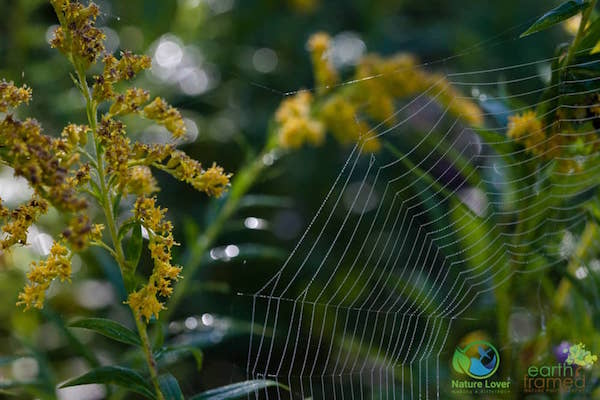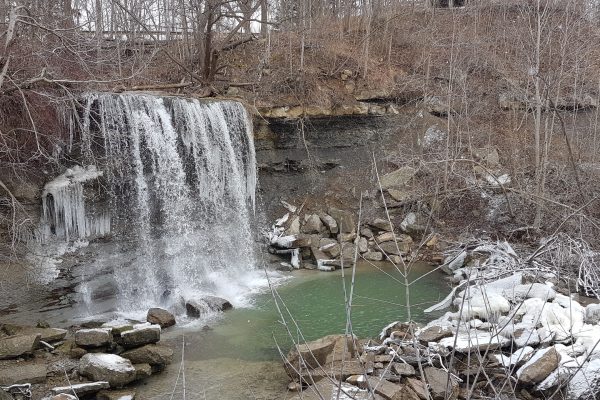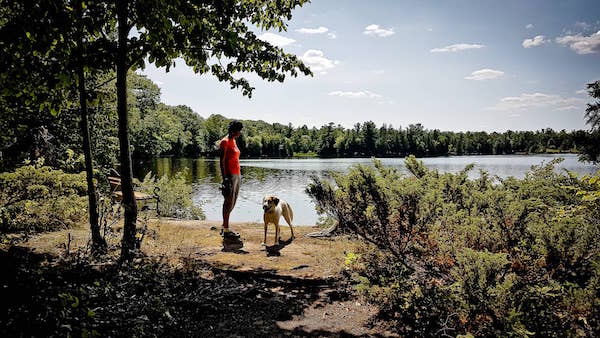Bridgeview Conservation Area is located in the town of Petrolia, Ontario and is one of our favourite local parks to walk in. During the fall, the trails and meadows are filled with wildflowers and a variety of insects.
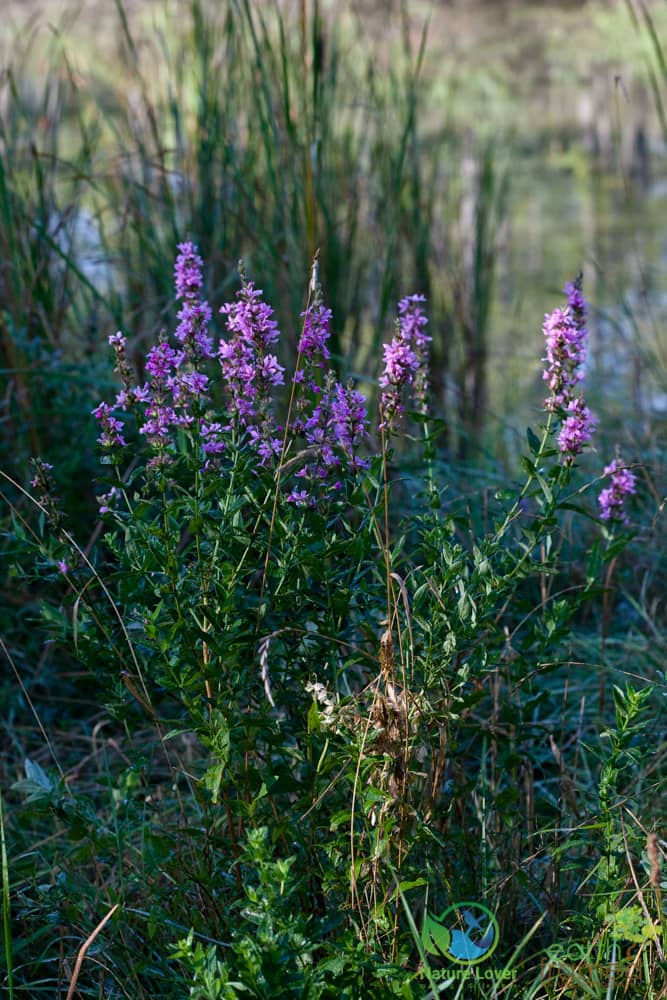
Near the pond, which is filled with fish, frogs and turtles, there was a patch of Purple Loosestrife among the Cattails. Often we spot a Great Blue Heron fishing from a log along the edge of the pond.
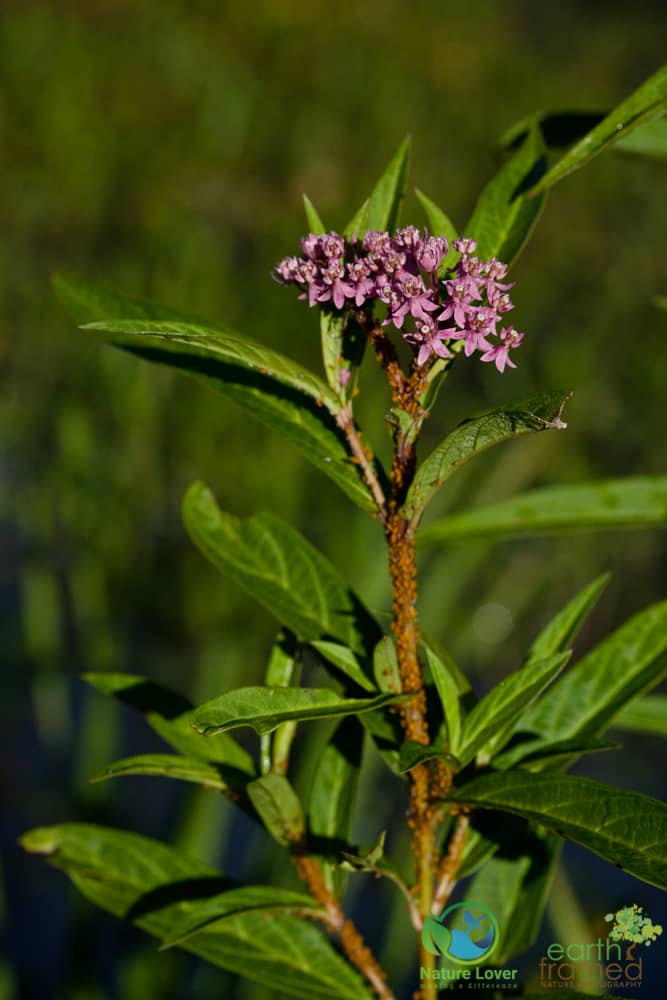
In one of the meadows there was a growing area of milkweed. Some of the plants were covered with aphids, which I hope did not do permanent damage to the vitality of the wildflowers. Aphids feed on the sap of the plant and cause quite a bit of damage, even death. The saliva that it excretes is toxic to plants. 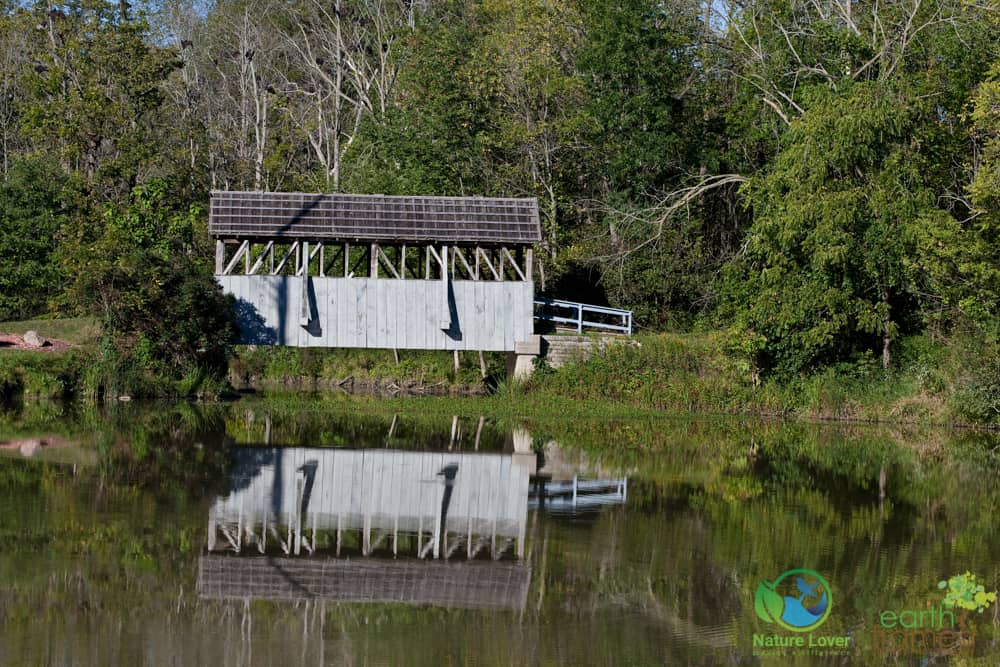
The covered bridge was spectacular with it’s perfect reflection and just behind it, on the dead trees, were frequent visitors basking in the early morning sun.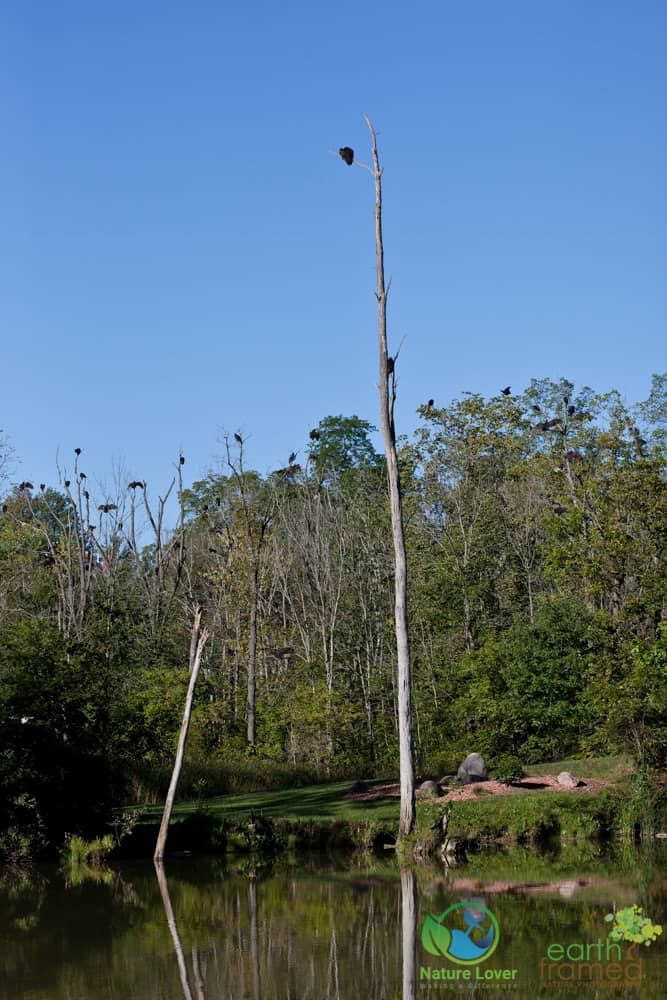
A group of turkey vultures were warming and drying themselves up in the morning sun, as they often do in this park. These scavengers , often called buzzards, provide a very important role in the environment, which is to dispose of carrion which prevents disease.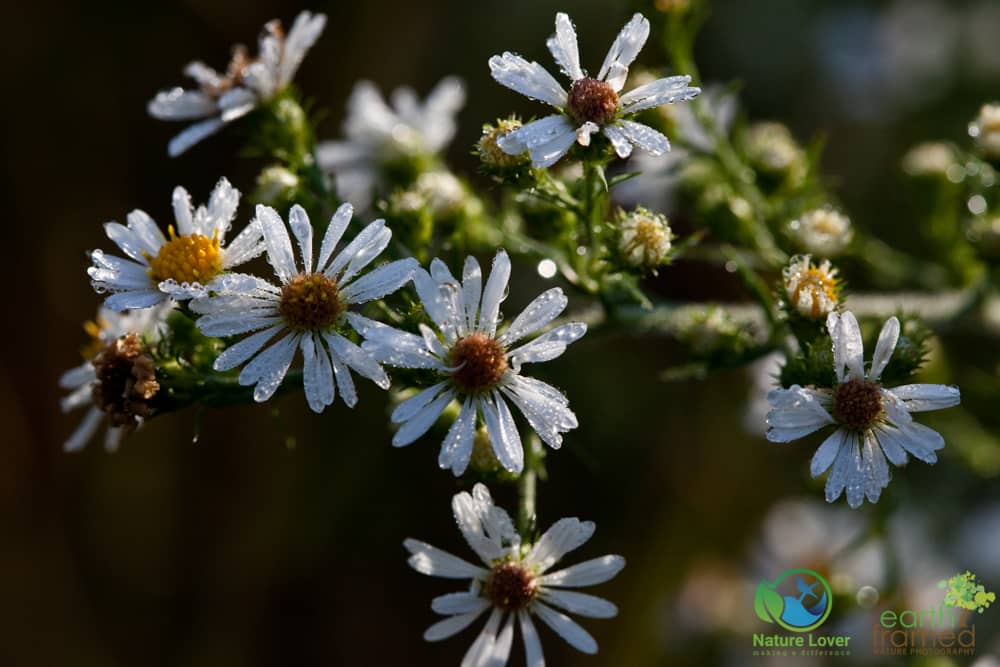
Morning dew was still clinging to these asters and the light was refracting off the water droplets.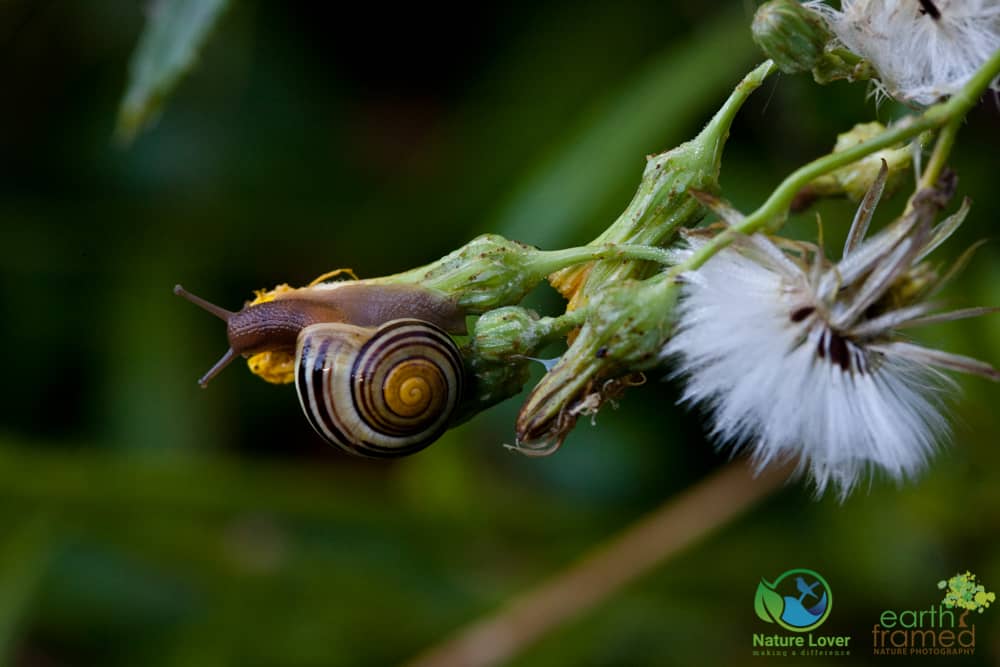
Land snails, or mollusks, were seen throughout the park. Snails eat leaves, stems, soft bark, fruit, vegetables, fungi and algae. What’s a snail without a shell? A slug.
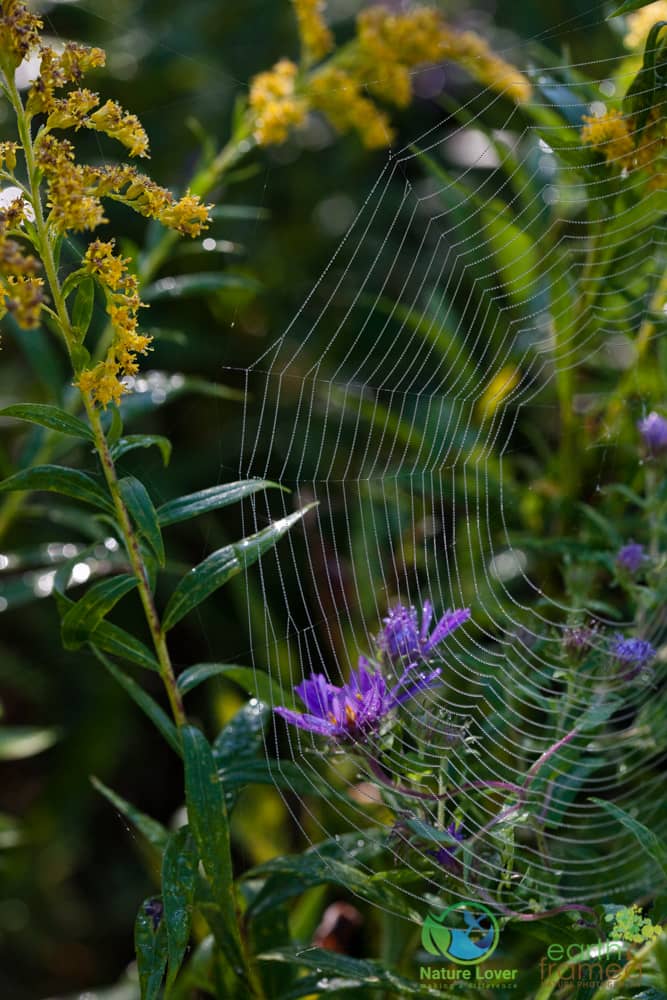
Spider webs captured small beads of water from the morning dew while the Goldenrod and New England Asters provided sturdy points of contact.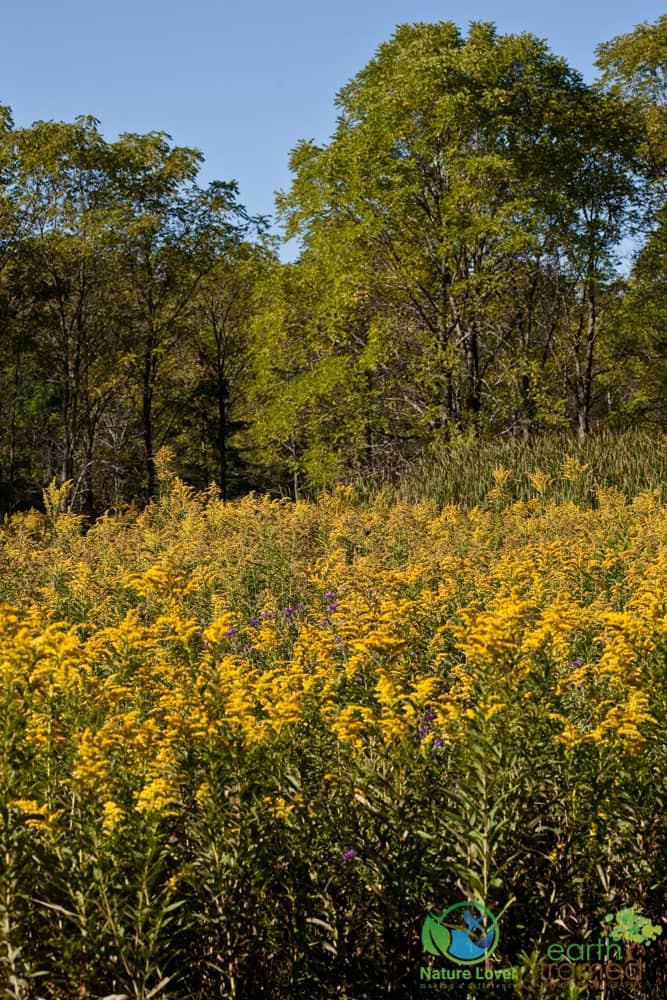
Fields of goldenrods provided food and habitat for insects, butterflies and wildlife.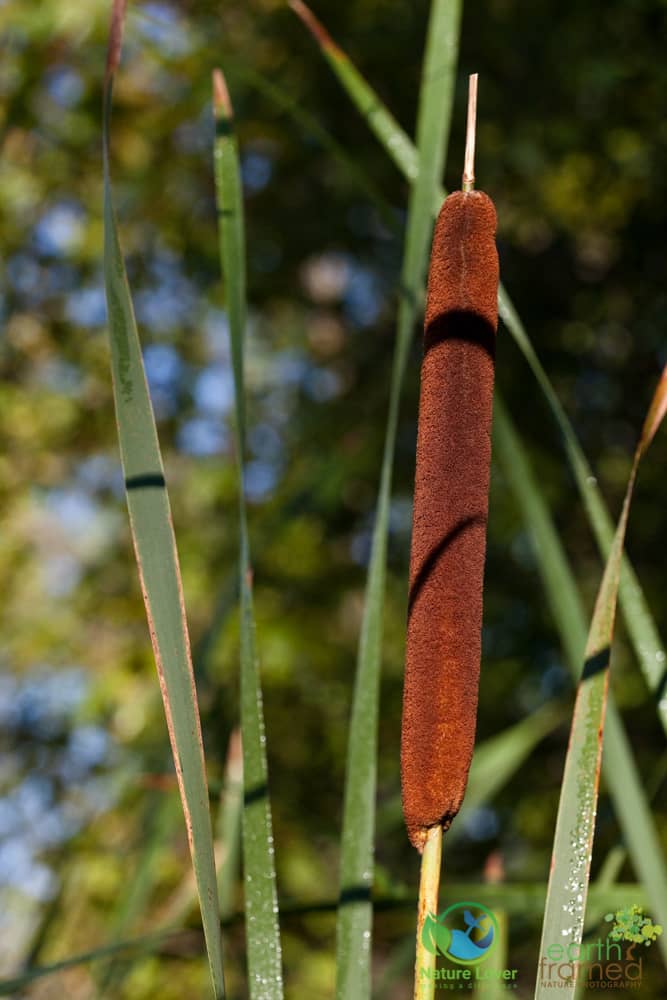
Cattails aren’t as common as they used to be due to the proliferation of phragmites. These aquatic plants are eaten by some wetland mammals and used to build dens and nesting places. The rhizomes can be eaten by humans and are an excellent source of protein. 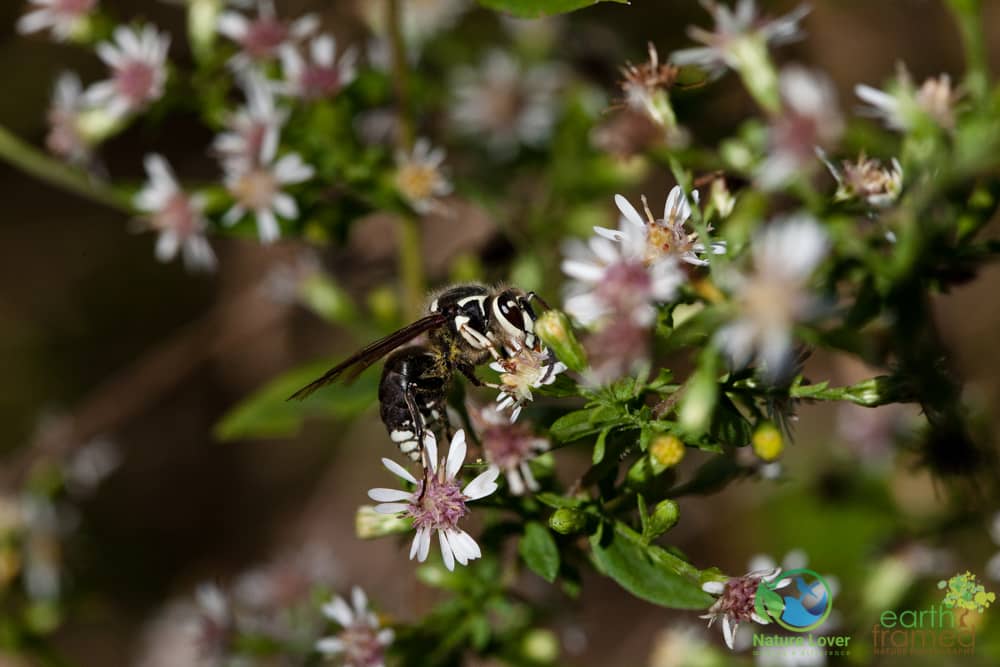
Bald-faced hornets are an aggressive, territorial breed of yellowjacket wasps. These white and black wasps play a beneficial role in ecosystems by controlling the number of flies, caterpillars and spiders.


